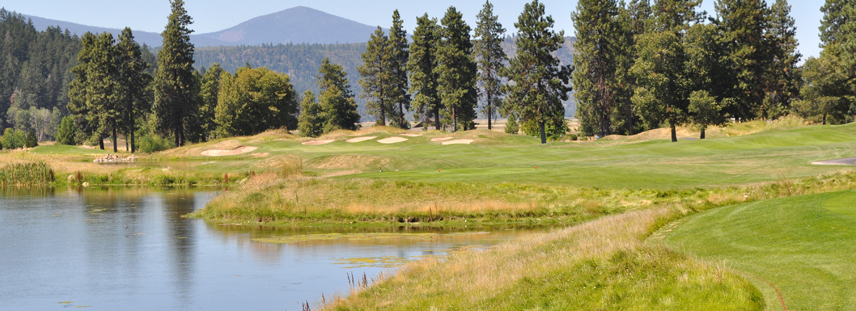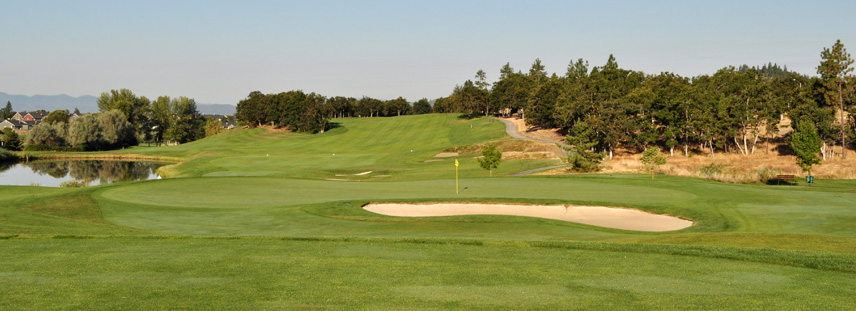The Running Y Ranch, located in Klamath Falls, OR is a must-visit resort course, and the only golf course designed by Arnold Palmer in the state of Oregon. The golf course is the crown jewel of a 3600 acre ranch just East of the Cascades. Running Y Ranch provides full lodging services as a full service resort, with shops and restaurants on site. Running Y Ranch alternates between sweeping meadows and wetlands, and forested hills, combining some of the greatest features Oregon golf has to offer. Running Y Ranch is as dramatic as it is well designed, particularly at its bookends. While the golf course is located within 20 minutes of downtown Klamath Falls, the majority of its play comes from resort guests, allowing for pristine course conditions even during the peak summer season. Running Y Ranch offers five tee boxes including the Palmer tee, marked by Arnie’s classic umbrella logo. The remaining for boxes are marked with his trademark colors, further cementing Running Y Ranch’s connection to one of the game’s all time greats.
The Running Y Ranch Golf Resort offers a combination of wide-open meadow golf with character, alternating with traditional Northwest golf. Stunning views of the Cascade Range and Klamath Lake features prominently throughout the course. The course is generally well maintained with well groomed fairways. In fact, it is not uncommon for your ball to land in an area without a divot within a 10 foot radius of your golf ball. Wayward shots can be penalized in a variety of ways, including water, tall grass, forested catch areas and well placed sand. The greens at Running Y Ranch provide a true roll and run fast in the summer months.
Playing Running Y Ranch
The first three holes at Running Y Ranch are similar in style, while each still providing unique challenges. The first hole is a challenging Par 4 that doglegs slightly to the left. The primary challenge on this hole is a green surrounded by sand traps. Next up is a Par 5 reachable in two, followed by another Par 4, which introduces water to the course for the first time. Each of the initial three holes runs along a large meadow to the left, with the ideal play to the right. Holes #4 and #5 share a water feature and are among the most visually appealing holes on the golf course. Rugged rock lined hazards and sand traps line these holes making them short yet challenging holes. The 5th hole is considered the signature hole at Running Y Ranch and the first Par 3 on the golf course. From there you head into the forest for the next 4 holes. The most unique of these 4 holes is #9, a Par 4 a downhill hole so severe many will want to attempt to drive the green, even from the back box.
The first hole on the back nine is a long and wide open Par 5. This a very scorable hole, but only reachable in two to the longest hitters. A difficult Par 4 awaits with water along the left side before heading back to the forest for a downhill Par 3. The next four holes are extremely tight featuring tree lined Par 4’s and a Par 3. #16 is considered Arnold Palmer’s favorite hole on the course. Target golf is a must through this stretch of holes. #17 features a split fairway with two completely different ways to play the hole. From the tee box, playing to the right looks like a shortcut but beware. Playing your tee shot left of the tall tree is shorter and the smart play. The finishing hole at Running Y Ranch is an exceptional hole, a Par 4 that rivals any in the area.


